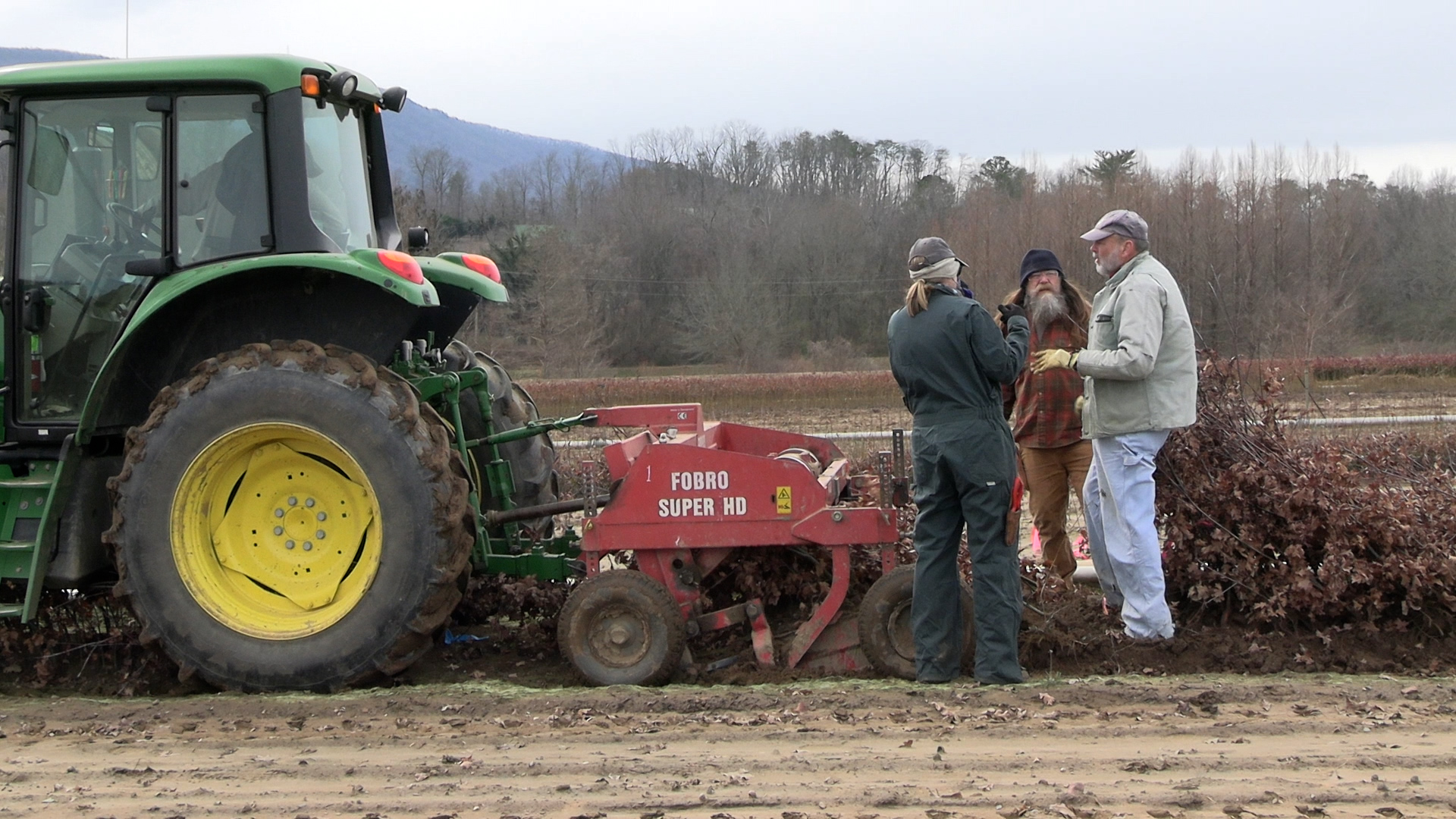
The program lifted two-year-old white oak seedlings from the East Tennessee Nursery for a U.S. Forest Service research project in Virginia in February. Program Director and septuagenarian Professor Scott Schlarbaum led the operation with research associates and specialists and the crew of USDA Forest Service Research Forester Stacy Clark.
“We’ve got a little space between the families and no space between the seed size within family, so John and I had to separate that and then separate the families, and those trees were so big I might have been able to handle that 20 years ago, 10 years ago, maybe 20 years ago, but that was pretty intense,” Schlarbaum said.
The seedlings came from the program’s seed orchard on Jack Daniel Distillery’s property in Lynchburg. Research specialist Ami Sharp worked to keep them sorted and categorized.
“When you’re down in there working like that you wouldn’t believe how easy it is to mix this category with that category, so she’s going to pick her own little project out of it, so that’s her little thing. Stacy’s running that part, and I’m just, today at this moment, I’m a ‘you shall not pass’ person,” Sharp said.
Clark planned to take some of the white oak seedlings to Virginia to see how the two-year-old seedlings perform compared to one-year-old seedlings from the same tree family. It’s a cooperative study with the Tree Improvement Program, the Virginia Division of Forestry, and Virginia Tech.
“This will be a very practical look at what managers should be planting in terms of age of the seedlings and size of the seedlings,” Clark said. She added the recommendations are important because of the decline of white oak across the eastern U.S.
“We have lots of big white oak out there, lots of big trees, but the little baby trees are not really making it into the next generation after a disturbance, and so, that’s why this is so important is to keep these white oaks on the forest, to keep them available for everybody’s use,” Clark said. “We use white oak for staves to make whiskey. We use it for flooring. Wildlife love white oak. Insects love white oak. It’s got a lot of ecological value to it.”
The seedlings not going to that study will be measured by the Tree Improvement Program. Other spare seedlings went to the U.S. Forest Service or the Tennessee Wildlife Resources Agency.
Schlarbaum said the seedlings were planted as part of an experiment with the East Tennessee Nursery. Reforestation Unit Leader Gina Sowders says the nursery has partnered with the Tree Improvement Program for years.
“I can’t think of a better way to educate future people to continue on the research, the partnerships that we have because unfortunately, those that we have involved now, they’re looking at retirement. We need fresh blood coming in,” Sowders said.
UT undergraduate student Bailey Guinn also helped lift seedlings and said he’s learning real-life skills through the program.
“I think it’s great as a student to be able to apply what you’ve learned out in the field instead of just having classroom experiences. I’ve learned quite a bit out with the program,” Guinn said.
Schlarbaum said this is the last seedling lift for his career. He added, “I’m not going to grow any more seedlings. This is the last lift that I’m going to do because it interferes with our grafting. I’m trying to start new and complete orchards that we’ve already started, so when I do retire, whoever comes in after me doesn’t have to do the rest of my stuff.”
Schlarbaum said he doesn’t plan on retiring for a few more years.
